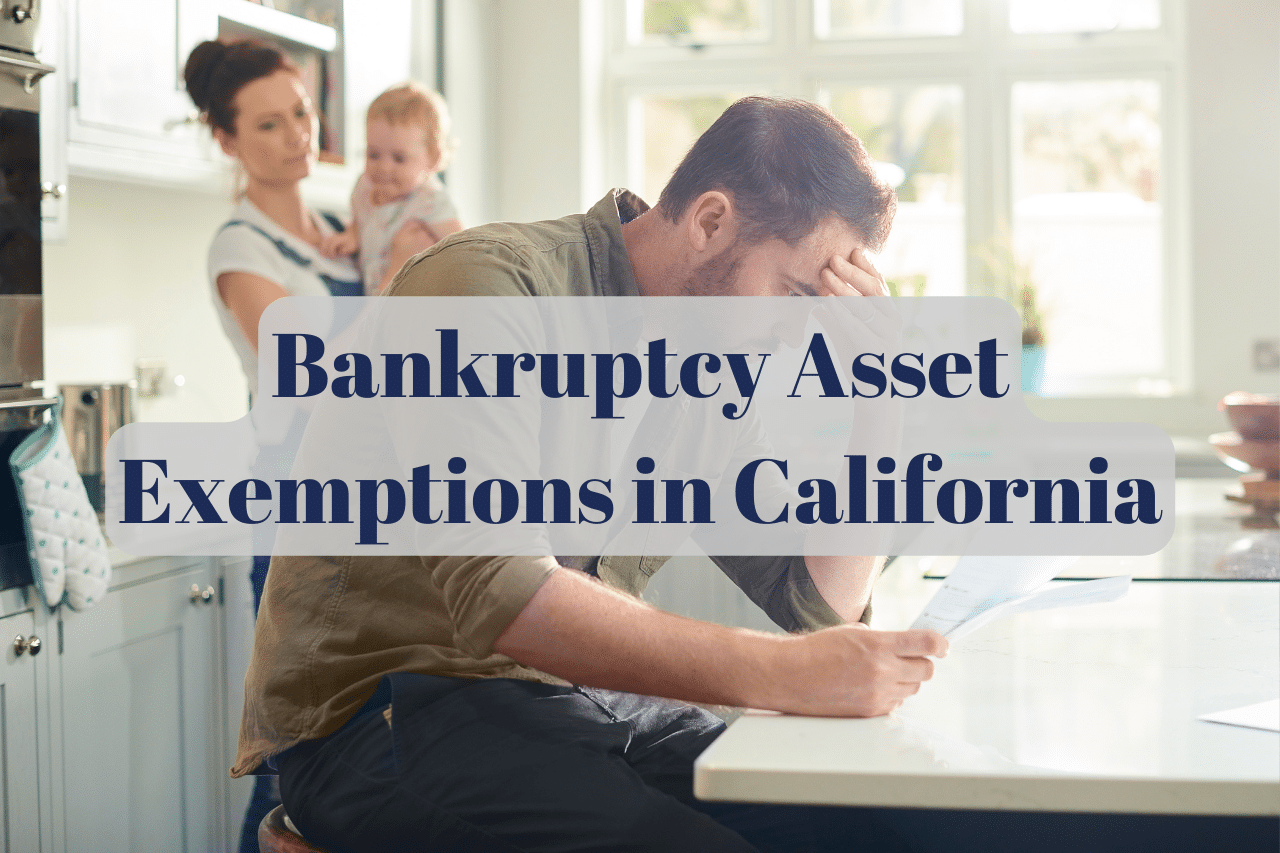
Filippi Law Firm, P.C., no longer practices bankruptcy.
Uncovering California Bankruptcy Asset Exemptions
Filing for bankruptcy in California can be a difficult and intimidating process. A key element of this process is understanding and taking advantage of California’s asset exemptions under the law so that your assets are protected as much as possible. In this blog, we will discuss everything that you need to know about uncovering California bankruptcy asset exemptions, from what is exempt from a bankruptcy filing to how you can maximize the protections that these asset exemptions provide.
What Assets are Exempt in a Bankruptcy in California?
When filing for bankruptcy in California, it is important to understand the assets that are exempt from the process. In general, most of an individual’s personal property, such as clothing, household goods, and furniture, is exempt up to a certain dollar amount. Additionally, wages earned within 90 days prior to filing for bankruptcy can be exempted up to a certain amount per week. Other categories of exemptions include retirement accounts (IRAs or 401ks), life insurance policies with cash surrender values, and homesteads (primary residences).
In addition to these general categories, there are also additional exemptions available, subject to specific criteria. For example, California residents may be able to protect some equity in their motor vehicle if they meet income qualifications; debtors may also be eligible for a tools of trade exemption if they use those tools in order to make a living.
Medical savings accounts and public benefits such as Social Security disability payments are also generally protected during bankruptcy proceedings. To maximize asset protection when filing for bankruptcy in California, individuals should become familiar with all available asset exemptions under state law and take the necessary steps to qualify for them before proceeding with their case.
How do Bankruptcy Asset Exemptions work in California?
Bankruptcy asset exemptions in California are designed to protect certain assets from being liquidated during bankruptcy proceedings. These exemptions allow individuals facing financial hardship to keep a portion of their property and possessions, allowing them to have some form of stability as they work toward resolving their debt issues.
Individuals filing for bankruptcy in California should become familiar with all available asset exemptions under state law before proceeding with the case; this will ensure that they maximize the protection provided by these laws. Moreover, additional exemptions may be available subject to specific criteria; for example, residents may be able to qualify for an exemption on equity in motor vehicles if they meet income qualifications or a tools of trade exemption if those tools are used as part of their occupation. By understanding how these asset exemptions work in California and taking the necessary steps before filing for bankruptcy, individuals can protect as much of their property as possible while still achieving a successful resolution of their financial difficulties.
What are the Limits on Bankruptcy Asset Exemptions in California?
When filing for bankruptcy in California, it is important to understand the limits on asset exemptions. In general, there are dollar amounts and income caps associated with most of these exemptions. Goods such as clothing, household items, and furniture usually have a maximum allowed value of $600. Additionally, wages earned within 90 days before filing can be exempt up to a specific amount per week.
Additionally, homesteads (primary residences) may have equity limitations depending on their value; debtors must also meet specific income requirements in order to qualify for an exemption on motor vehicles or tools of trade. Furthermore, under federal law, some assets, such as tax refunds, cannot be claimed as exempt during bankruptcy proceedings, regardless of state regulations.
By understanding the limits on asset exemptions when filing for bankruptcy in California, individuals can ensure that they maximize the protection provided by these laws and minimize any risk of liquidation during the process. Moreover, individuals should research all available options before proceeding with their case; this will help them take the necessary steps before filing, which could result in greater asset protection after the completion of their financial difficulties. With this knowledge about how asset exemptions work in California, together with proper planning and guidance from experienced bankruptcy attorneys or other professionals if needed, individuals can protect as much property as possible while still achieving a successful resolution of their debt issues.
How can I maximize my Bankruptcy Asset Exemptions in California?
When filing for bankruptcy in California, individuals should become familiar with the asset exemptions available under state law. These exemptions protect certain assets from being liquidated during bankruptcy proceedings, allowing debtors to retain some form of stability as they work toward resolving their financial difficulties. To maximize protection when filing for bankruptcy in California, debtors should research all applicable asset exemption laws and take the steps necessary to qualify for them before proceeding with their case.
By understanding how these asset exemptions work in California and taking the necessary measures before proceeding with their case, individuals can maximize the protection provided by these laws while still achieving a successful resolution of their debt issues.
In conclusion, uncovering the asset exemptions available under California bankruptcy law can be a beneficial step for individuals filing for bankruptcy in the state. With this knowledge, these debtors can take the necessary steps before proceeding with their case, which could result in greater protection of their property after the completion of their financial difficulties. Furthermore, understanding how these asset exemptions work in California will help individuals maximize the protection provided by these laws and minimize any risk of liquidation during the process. Ultimately, having an understanding of available asset exemption options when filing for bankruptcy can lead to a successful resolution of debt issues while still retaining as much property as possible.
The process of disclosing assets and understanding the bankruptcy asset exemptions in California can be complex. Many individuals hoping to seek debt relief through bankruptcy in California are unaware of the various rules and protections afforded by bankruptcy laws. Learning about protected assets and restrictions on claiming them can be a great tool for individuals looking to file for bankruptcy in California. Utilizing this information, individuals have a solid foundation to build upon when filing for bankruptcy and maximizing allowable exemptions that work best within their current financial situation.
Filippi Law Firm, P.C., provides legal services in estate planning, probate, trust administration, trust litigation, and business law in the greater Sacramento area, with a focus in Rocklin, Roseville, Lincoln, and Granite Bay. Give us a call at (916) 333-7910 or fill out the contact form to get in touch with our office. Consultations are free, and they can be done over the phone, via Zoom, or in person at our office in Rocklin.

 By: James Filippi
By: James Filippi